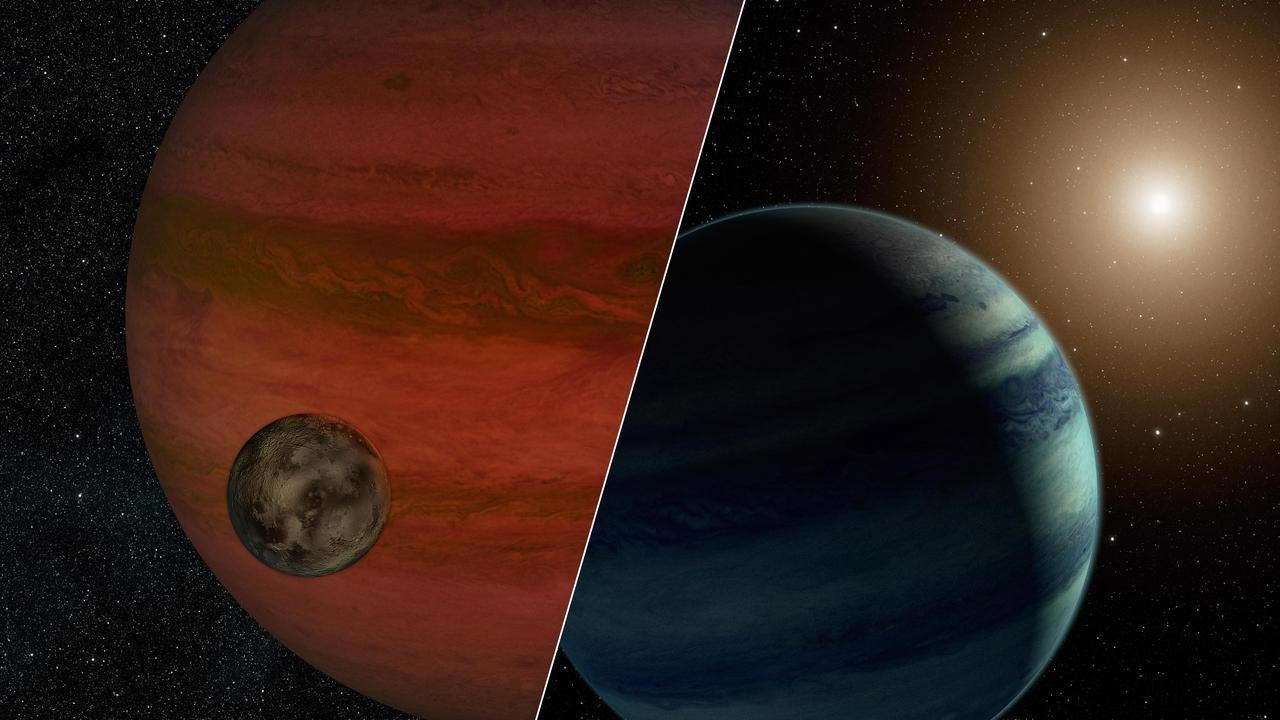AZoQuantum talks to David Kipping, assistant professor at Columbia University, about his hunt for exomoons and the discovery of Kepler 1708 b i.
Could you please tell us a little about your background and how you came to be involved with this research?
My interest in exomoons began with my Ph.D. at UCL (London), which was themed on the topic. I was always surprised that there weren’t more astronomers interested in the search; after all, moons are so common and diverse within our solar system that to me their existence was not only inevitable but also an opportunity to learn about the universe in a wholly new way.
Could you please provide a definition for exoplanets and exomoons?
An exoplanet is a planet that orbits a star other than the Sun, although there is some debate about what to call rogue planets drifting between the stars or objects with masses in between that of Jupiter and stars. An exomoon is simply a satellite body to an exoplanet.
Why is it that efforts to discover exomoons have been unsuccessful in the past when so many exoplanets have been identified?
Exomoons are expected to be much smaller and less massive than exoplanets. Our detection methods have sensitivities directly proportional to these properties, so sufficiently small planets (or moons) will simply evade detection.
For context, the Kepler Mission is the most successful exoplanet-hunting mission to date but, by design, it cannot detect planets smaller than the Earth for the vast majority of stars it looks at. Thus, any moon smaller than about one-Earth radius would also be undetectable (Ganymede is the largest Solar System moon at 0.4 Earth radii). To make matters worse, the moon’s signal gets mixed up with that of the planet, due to their close proximity, making it tricky to disentangle.
What causes a planet to lose its moons or be incapable of having any?
Our Moon provides an example of a one-loss mechanism. It raises tides on the Earth but because its orbital period is slower than our spin, the tidal bulge it raises “overtakes” the Moon and pulls back on it, causing the Moon to gain angular momentum and move away from us. Indeed, it recedes about an inch per year. The Sun will engulf the Earth long before we lose the Moon this way, but this mechanism should cause many large moons to be lost across the cosmos.
The identification of Kepler 1708 b i, the name of the moon, is actually the second proposed exomoon discovery. When was the first exomoon identified and why has this initial discovery faced skepticism?
The first case was Kepler-1625b-I, which my team announced in 2018. In that work, we found two pieces of evidence for a moon using the Hubble Space Telescope. The first was a timing offset in the Jupiter-like planet’s transit, consistent with the offset that would be caused by a Neptune-mass moon.
The second evidence was an additional dip in starlight occurring after the planet, consistent with that which would be caused by a Neptune-radius moon. Further, the timing offset predicted the moon dip should occur post-transit, which indeed is what we saw.

Image Credit: NASA/JPL-Caltech
Since the paper was published, two other teams analyzed the same data and both recovered the same timing offset. One of the teams independently recovered the same moon dip as well, but the other team was unable to. Later, my team analyzed that team’s reduction and found that it was affected by greater levels of systematics than our own, which we suggested could explain their inability to detect the moon dip.
I think doubt remains for two reasons. First, we only have a single transit observed with Hubble (the signal is too small to see with Kepler) and the instrument we used was a near-infrared detector that is much more finickity to work with than optical detectors.
Clearly, we need to see a second repeat or absence before the situation can be resolved. Second, the moon is surprisingly large – a Neptune orbiting a Super-Jupiter. It’s only natural that doubt will persist as we don’t see anything like this in our solar system – but then again, that really describes much of the story of exoplanet discovery.
What is the transit method for identifying extrasolar bodies? Is this the same method used to identify exomoons?
The transit method detects planets by observing the dip in stellar brightness caused when the planet eclipses the star. We look for moons by seeking secondary dips; as well as the gravitational tug, the moon has the planet’s dip.
What are the limitations of this method? Is it capable of detecting moons of smaller masses?
The method itself is capable of detecting arbitrarily small moons - the limitation is in the telescopes. If your telescope can’t detect planets smaller than Earth for most stars (such as Kepler), then that engineering limitation will always curtail your moon hunting endeavors.
How does the size of Kepler 1708 b i compare to the moons in our solar system?
The moon candidate is about 2.6 Earth radii, so there is really no comparison. It is in between the size of Earth and Neptune, but what does such an object looks like? We have no idea.
The Kepler 1708 b i exomoon and its planet will not pass across their parent star again until March 24th 2023. Will we have to wait till then to confirm the detection of the exomoon once and for all?
There’s no guarantee we can confirm it then either. The moon is in motion, so sometimes it will overlap almost perfectly with the planet, hiding in its shadow. If that happens, there’s no signal even though there’s a moon present. The moon can’t hide every time though, so a sustained observing campaign over many years could determine the answer.
Six New Exomoons? Not So Fast…
Video Credit: Cool Worlds/Youtube.com
How will the recently-launched James Webb Space Telescope contribute to the mission of more clearly identifying exomoons?
It remains to be seen, of course. If JWST spends no time looking for exomoons, it will find no exomoons. We are putting together a proposal to use JWST to look for moons, and believe that moons as small as Ganymede should be detectable. However, there’s a certain degree of luck, politics, and timing with such proposals and exomoons have historically struggled to get much telescope time.
How could the discovery of exomoons advance our knowledge of how extrasolar planetary systems form and work?
There are three major opportunities here. Moons could represent frequent temperate abodes for life in the Universe, an idea familiar to sci-fi fans. Moons may also play a crucial role in sculpting the habitability of the planets they orbit, in the same way that has been hypothesized for our Moon in relation to Earth.
Finally, exomoons will reveal our uniqueness – was the Earth-Moon system a bizarre fluke of the Universe or an inevitable outcome of planet formation? Without more examples, we’ll never know.
What was personally the most exciting or significant part of this research to you?
I think the most significant thing is that we’re improving our ability and methodology for moon hunting with each study. These are the early years still for this field, we are in sort of a shakedown cruise of sorts, devising the methodology as we go! But the lessons from each study help us in the next.
Will you continue in your efforts to research and identify exomoons?
Absolutely yes, we have some exciting plans in the works!
About Dr. David Kipping
 David Kipping is an Assistant Professor of Astronomy at Columbia University, where he researches extrasolar planets and moons. He leads the Cool Worlds Lab at Columbia: Cool Worlds Lab. He is most well-known for his work on exomoons, but his research interests also include the study and characterization of transiting exoplanets, the development of novel detection and characterization techniques, exoplanet atmospheres, Bayesian inference, population statistics, and understanding stellar hosts. David Kipping is the Principal Investigator (PI) of The Hunt for Exomoons with Kepler (HEK) project.
David Kipping is an Assistant Professor of Astronomy at Columbia University, where he researches extrasolar planets and moons. He leads the Cool Worlds Lab at Columbia: Cool Worlds Lab. He is most well-known for his work on exomoons, but his research interests also include the study and characterization of transiting exoplanets, the development of novel detection and characterization techniques, exoplanet atmospheres, Bayesian inference, population statistics, and understanding stellar hosts. David Kipping is the Principal Investigator (PI) of The Hunt for Exomoons with Kepler (HEK) project.
Disclaimer: The views expressed here are those of the interviewee and do not necessarily represent the views of AZoM.com Limited (T/A) AZoNetwork, the owner and operator of this website. This disclaimer forms part of the Terms and Conditions of use of this website.